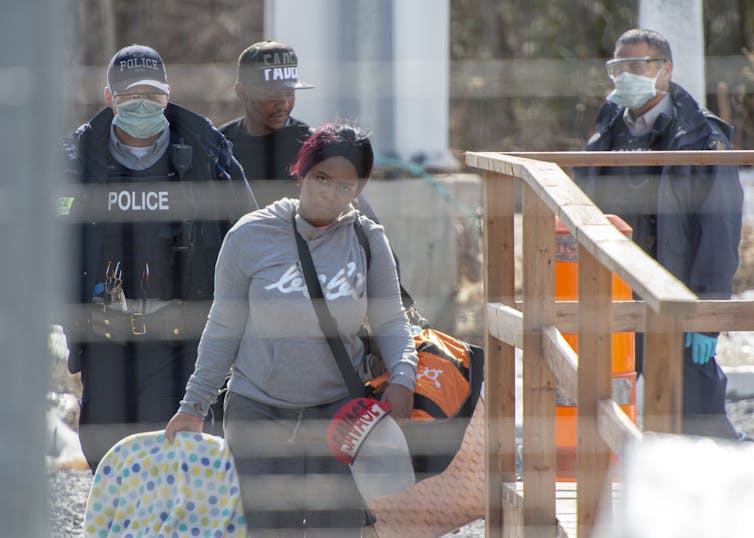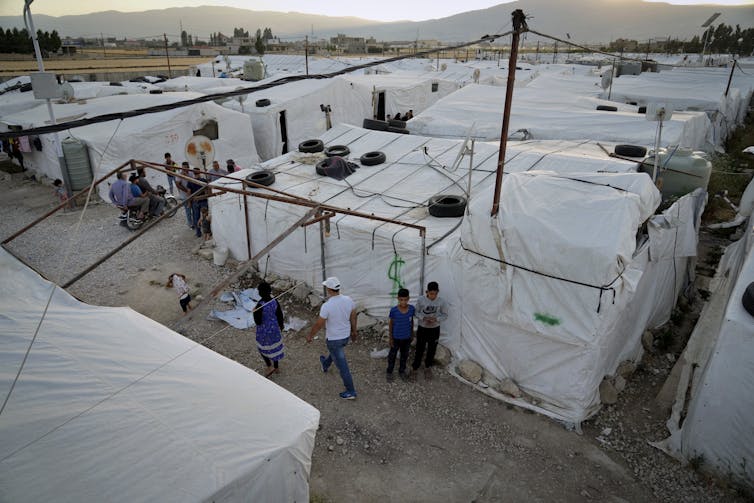
Laura Madokoro, Carleton University
In recent weeks and months, there have been a number of stories about migrants being sent to places without their consent.
In the United Kingdom, a new policy has been introduced to send certain asylum-seekers to Rwanda instead of hearing their claims for protection.
In the United States, the Republican governors of Florida and Texas have made headlines for sending migrants arriving in their states to Martha’s Vineyard and Washington, D.C.

The suggestion by New York Mayor Eric Adams that migrants be forcibly housed on cruise ships because the city’s shelters are overflowing was met with outrage from housing activists who deplored the conditions in which people might be kept.
Yet, historically, people have sought refuge in shelters, and even jails, because they have been understood as relatively safe. The issue is about choice.
Giving up control
In each of the recent cases, whether out of benevolence or ill will, government authorities are making decisions about where people should receive refuge.
In doing so, they are compounding a decades-old problem that implies that if people have been forced to flee their homes, whether for political, environmental or economic conditions, they have given up any say about their futures. Instead, the argument goes, people should be grateful for any assistance they receive or any home they might be offered.
This expectation is at the heart of the Canada-U.S. Safe Third Country Agreement, a deal that allows Canada to turn away asylum-seekers trying to enter the country from the U.S. at official land border crossings.
Refugee advocates and leading human rights organizations such as Amnesty International are currently challenging the legality of this agreement in the Supreme Court of Canada.
The Safe Third Country Agreement, in effect since 2004, forces migrants in the U.S. or Canada to make an asylum claim in their country of arrival. This agreement and many other laws, regulations and policies both implicitly and explicitly assume that along with fleeing their homes for safety, migrants are also giving up the right to make decisions about their futures.
Losing the right to have rights?
It’s a variation of political philosopher Hannah Arendt’s observation, made after the Second World War, that refugees were people who had lost the right to have rights.
But freedom of mobility is a fundamental human right. It is enshrined in the United Nations’ 1948 Universal Declaration of Human Rights. Article 13 of the declaration states:
“Everyone has the right to freedom of movement and residence within the borders of each state [and] … everyone has the right to leave any country, including his own, and to return to his country.”
Crucially, the declaration is silent on the right to enter. That’s why refugee determination processes that are intended to protect people under the terms of the 1951 UN Convention Relating to the Status of Refugees are so important.
People have the right to make asylum claims under both the 1951 Convention and 1948 Declaration, yet despite these safeguards, governments are denying migrants these rights. And they’re doing so by deliberately obfuscating the choices and rights available to migrants.
Some scholars suggest that the lack of choice in the current international refugee regime makes taking refuge, especially in camps, the equivalent of being imprisoned.

The irony is that, historically, migrants and other people who found themselves in vulnerable situations chose to repurpose prisons for refuge and sanctuary. They obviously weren’t intended as such, but people made jails into sites of refuge when the elements or hostile citizens proved too threatening.
If we understand the diversity of historic sites of refuge, then we can better understand how the issue of choice is so imperative in any discussions about asylum-seeking and protection in the present.
Unlikely shelters
In the late 19th century, across North America, the twinned issues of homelessness and poverty often overwhelmed existing charities. When people couldn’t find refuge in a shelter, they often engineered a petty crime that would land them in jail for the night. It wasn’t ideal, but it gave them shelter from the elements and sometimes a warm meal.
Police stations were also used as refuge by people fleeing various forms of violence.
In 1907, South Asian migrants took refuge in a local jail in the face of mob attacks in Washington state. The origins of this violence were rooted in increasingly tense labour relations when white workers violently reacted to the arrival of South Asian workers in Bellingham, Wash.
As the number of South Asian workers moving to the area began to rise, white labour leaders called for the migrants’ expulsion. In September 1907, a mob attacked South Asian workplaces and residences. Many South Asians were literally driven out of town but others sought refuge in the local jail where it was relatively safe.
Migrants have rights
The idea of police stations as sites of refuge seems incredible given current concerns about police violence, including campaigns to defund police.
But just because it’s hard to imagine police stations serving as sites of refuge doesn’t mean we should forget that asylum-seekers have the right to determine what’s best and safest for them.
People don’t give up their right to be mobile or their right to make decisions about their lives simply because they are forced to flee untenable circumstances. Human rights are inevitably constrained, but they still exist.
Recent government actions would have people believe otherwise. But if we sacrifice the capacity of some people to be treated as fully fledged human beings, we’re putting that right at risk for all.
By remembering that people historically sought refuge where they could, even in some surprising locations by today’s standards, then we can better understand why people are moving now and why it is wrong to force them into circumstances where they have no say.![]()
Laura Madokoro, Associate Professor, Department of History, Carleton University
This article is republished from The Conversation under a Creative Commons license. Read the original article.

